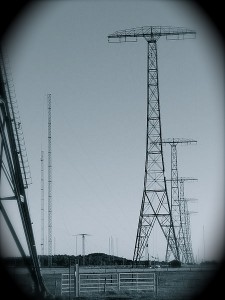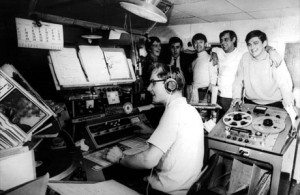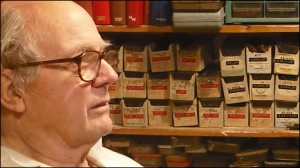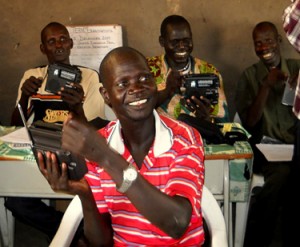Lately, I’ve been listening to a plethora of shortwave broadcasts as I’m about to review several new radios. I’ve noted so many great interval signals that are still in use. The following is a reprise of a previous post–from over two years ago–about interval signals. If you’ve never heard of interval signals, this post offers an introduction.
What are interval or tuning signals? Often the most recognized sounds in the shortwave bands are the repetitive tones and musical interludes heard between broadcasts, known as interval signals. These are simply characteristic musical phrases that broadcasters play between programs. In fact, for me, nothing is more nostalgic than to hear the interval signals of some of my favorite broadcasters from my youth. Here are a few classic examples of interval signals:
Interval signals usually include station and program identification, and are often in multiple languages. Not only do they help identify the station, but in the days of crowded international broadcast bands, interval signals helped listeners tune in and adjust their radios prior to program commencement.
Broadcasters have been using interval signals since the 1920s, but there has been a decline with the advent of digitally tuned radios which, unlike analog tuners, take the guesswork out of tuning into a specific frequency.
So, in this digital age, are interval signals still around? Sure. Many broadcasters believe an interval signal is still the best way to announce station and program identification; one might say their interval signals have become audio “logos.”
Here is an audio clip I recorded on April 23, 2009, of the interval signal for the new Happy Station Show: [Click here to listen]
For comparison, listen to this audio clip of the Happy Station Show from Jan 20, 1980, when it was a part of Radio Netherlands: [Click here to listen]
Listening for Signals
Where can you hear interval signals today? Fortunately, they can be heard all over the shortwave broadcast spectrum. The best times to hear interval signals are on the top of the hour and sometimes at the half or quarter hour.
Another great place to hear interval signals are on the web. There are several interval signal databases where you can listen to a wide variety of interval signals. One of my favorites is the Interval Signal Database. This site is in German and English and is well categorized and searchable. In fact, Bernhard, the webmaster of the Interval Signal Database, gave me permission to publish several of his audio clips above. [Danke, Bernhard!]
Here is a list of interval signal websites:
Since he’s somewhat of an interval signal guru, I asked Bernhard for his favorite interval signal recording. He pointed out this one from the Cold War era: it is a recording of a special low-power (1kW) training station of the Austrian military. Bernhard informed me that in times of crisis, this station was to serve as a back-up for the Austrian Radio ORF.
Leave a comment: What is your favorite interval signal, and why?
• • • • • • • • • • • • • • • • • • • • • •
On a side note–Bernhard also pointed out one of his favorite non-interval signal recordings. In this recording, the news reader started the German language news by reading the frequencies, then noticed that the studio door was open. You can clearly hear her getting up to close the door in the recording.
 A friend recently sent me this archive site of a BBC documentary from 2005 that tracks the Lincolnshire Poacher and other numbers stations.
A friend recently sent me this archive site of a BBC documentary from 2005 that tracks the Lincolnshire Poacher and other numbers stations.




